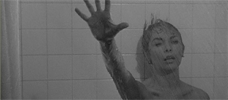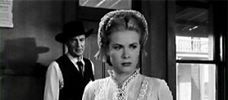Reviews
Le Fabuleux Destin d’Amélie Poulain
Jean-Pierre Jeunet
France, 2001
Credits
Review by Adam Balz and Anna Bak-Kvapil
Posted on 26 January 2011
Source Netflix On-Demand
Categories Blind Spots
She doesn’t relate to other people. She was always a lonely child.
Introduction by Anna Bak-Kvapil
Released in those dark winter months following 9/11, Amélie was the ideal film to distract audiences from an increasingly grim reality. Set in an imaginary green-and- orange-hued Paris where a lonely girl seeks love and avenges small injustices, Amélie was a romantic fable leavened with just the right amount of dark humor. Nominated for five Academy Awards, the film won multiple César Awards, was garlanded with audience awards at film festivals across the world, and became a mammoth commercial hit in France. The film also introduced Audrey Tautou to America, where she was heralded as the second coming of Audrey Hepburn, reliably described by reviewers as a beguiling waif/sprite/pixie/gamine. (With the negligible exception of The Da Vinci Code, she never translated into American films, remaining a purely French superstar.)
The character of Amélie appealed to shy quirky girls everywhere. Her Louise Brooks bob and Doc Martens oxfords updated the 90s vintage alternative style for the millennium, inspiring a slew of Amélie look-a-likes, who could usually be spotted in bookstores near the graphic novel section. I’m not ashamed to say Amélie was one of my favorite movies of the year; the poster hung in a prominent spot in my teenage bedroom, right above my Doc Martens.
Amélie was so critically well received that Salon’s Charles Taylor qualified his lukewarm review by writing, “panning Amélie is probably the quickest way for a critic to get himself thought of as cynical and unfeeling.” But he wasn’t alone; Cannes considered Amélie not serious enough to be included in the festival, and the whitewashed version of a Paris largely free of immigrants raised the hackles of some critics, particularly French ones. As an international hit, Amélie was an ambassador for French culture, but presented a clichéd Paris, complete with accordion music, Renoir paintings and crème brûlée. Amélie still reliably alienates viewers, especially as tweeness becomes increasingly passé. It embraces whimsy with such unabashed energy and delirious optimism that some find the charm far too forced.
As Amélie ages, I wonder whether it will gain more lovers or more haters, or even continue to be so divisive. I’m guessing that the dark, weird undercurrents that peek through the charm will save it from being dismissed with all the other twee films from the 2000s. That strange quality is what made the film seem so appropriate for the winter of 2001, and that’s what will probably uphold its reputation even as the trends it embodied wither and fade away.
Review by Adam Balz
There’s no discernible reason for me to have never watched Amélie. It’s recognized for its beautiful cinematography, which has always been something that draws me to even the most cliched films, and its director is responsible for Delicatessan, a film I enjoyed greatly. Yet whenever the opportunities presented themselves - library DVDs, repeated screenings on IFC, offers from friends to lend me a copy - I always preferred something else, and always without reason. It had nothing to do with the film’s popularity, however earned or unearned it might have been, or its Oscar nominations. In fact, if I had to pinpoint a reason beyond my own laziness and disinterest, it might have been the truly awful DVD cover: an overly exuberant Audrey Tautou against a winter-green backdrop, her skin pale and pupils large. But even bad graphics are no reason to overlook a film.
Needless to say, I watched Amélie for the first time with an open mind. I did not plan to like it, I didn’t plan to hate it; I wanted to watch it and see what happened. The first ten minutes were charming enough—a Magnolia-esque preface concerning random but concurrent events happening throughout Paris, all of which leads to an introduction of the title character and her family. Amélie Poulain’s early years are, to be sure, tragic and uneventful; her father gives her little attention, her mother is strict and possibly unstable, and her only true companions - a suicidal goldfish, imaginary creatures - are a far substitute for affection. When Amélie’s mother dies in a freak accident outside a cathedral, her father retreats into himself, and Amélie becomes the introverted but optimistic young woman we meet in at her job in a small Paris cafe years later.
The premise of Amélie is a simple one: after uncovering and returning a lost tin of keepsakes to her apartment’s long-ago tenant, she decides to continue this habit of anonymous do-gooding by helping those around her find happiness and fulfillment. This, however, is no small task; her community of family, friends, and neighbors is populated by quirky, asocial misfits not unlike those featured in Delicatessan. There’s Lucien, the Princess Di-obsessed grocery clerk who is constantly belittled by his boss, even though he’s a caring and gifted salesman with a penchant for mischief; Georgette, a co-worker of Amélie’s whose hypochondria is more or less an extension of her loneliness; Madeleine Wallace, a landlady who worships the letters and photo of a long-lost love; and Mr. Dufayel, a reclusive neighbor with brittle bones who obsessively paints the same Renoir painting every year. Slowly, one by one, Amélie begins to work on changing the lives of these people. She hooks Georgette up with one of the cafe’s regulars, a troubled man who sits at the cafe only to stalk his ex-girlfriend, a waitress, and her health problems all but vanish. Amélie entices her melancholy father into traveling by kidnapping his garden gnome and sending it across the world with an androgynous flight attendant; every so often, he receives photographs of the gnome outside famous landmarks—a series of ransom notes that begs no money. And she begins to visit with Mr. Dufayel, even sending him videotapes of random yet inspiring images: - horse leading the Tour de France, a one-legged man tap-dancing in the dirt, babies in a swimming pool. All of Amélie’s actions are well-intentioned and heartfelt, providing us with an insight into who she is as a person.
However, all of these kind actions serve to distract Amélie from the realization that her own life is empty and without love, as she discovers when she runs into a handsome young man named Nino. At the onset, Nino seems like an ill fit for Amélie—just someone she can obsess over from a distance. But as we - and Amélie - learn more about him, we begin to see similarities. First, he is somewhat quirky and withdrawn, and its his prized possession - an album of photo-booth strips that have been torn up and discarded by their owners - that she uses as leverage to keep him in her life. He also works part-time jobs that make people happy, though in off-center ways—as a ghoul on an amusement park ride and the clerk at an adult video store, neither of which seem to give him much satisfaction. But most of all, as we discover early on, both he and Amélie know one another from their childhoods, when they used to communicate to one another across Paris through mirrors. Amélie is obviously smitten, but she cannot approach him and voice her feelings. Instead, she retreats into her small apartment and her altruism, obviously hoping that this will squelch her longing.
The film itself seems to have mixed feelings about Amélie’s newfound desires to be a good Samaritan. One one hand, her small gnome prank eventually drives her father to leave him home and travel, which is what he needs to overcome the grief and emptiness he still feels over his wife’s death. But Amélie does not relate her father’s small triumph to her own life; she does not see that, in filling the emptiness of his life by taking a risk, her father has made more progress towards happiness than she has. It’s the only unsettling aspect of Jeunet’s film—the idea that someone could meddle in the lives of others without first changing her own life. It seems almost disingenuous for Amélie to “fix” the lives of those around her while her own existence is in such disrepair, something none of the other characters - or the filmmakers themselves - see fit to address outright. In fact, the closest the film comes to condemning Amélie at all is when some of her animal-inspired apartment décor - a pig lamp, Michael Sowa paintings on the wall - shake their heads in frustration as she goes to bed alone. (If I remember correctly, the only other character in the movie to experience these elements of magical realism is Nino, who is awakened by a strip of photographs taped to his own lamp.)
Still, the overall message of Amélie is one that can be appreciated, though any attempts to distill it into a few simple words would sound like Hallmark-style proselytizing on my part: “Life for today,” “Take a leap of faith,” “Embrace the here and now,” and so on. And while I realize that not everyone appreciates a happy-go-lucky French film, it’s now clear that any reservations I may have had over the last ten years about seeing this film were totally unfounded. It’s a very well-made and well-written film, with great acting and just enough quirk of its own to make any objections irrelevant.
More Blind Spots
-

Pee-wee’s Big Adventure
1985 -

The Matrix
1999 -

Amélie
2001 -

The Breakfast Club
1985 -

Psycho
1960 -

Blade Runner
1982 -

Chinatown
1974 -

Monty Python and the Holy Grail
1975 -

Rocky
1976 -

High Noon
1952 -

Ferris Bueller’s Day Off
1986 -

Taxi Driver
1976 -

The Godfather
1972 -

E.T.
1982 -

Pulp Fiction
1994
We don’t do comments anymore, but you may contact us here or find us on Twitter or Facebook.



